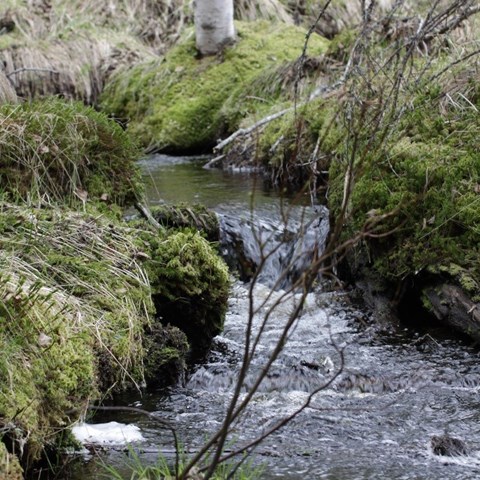Contact
Department of Aquatic Sciences and Assessment, Division of Geochemistry and Hydrology

This Formas project (2018-2020) aims to increase the knowledge about process for formation of bioavailable species of mercury, methyl-mercury, and mobilization of mercury as a consequence of forestry related disturbance. The project aims to identify site specific factors influencing the sensitivity to forest harvest in landscapes and evaluate mitigation strategies regarding mercury.
Mercury concentrations in freshwater fish are at levels that the World Health Organization (WHO) deems potentially harmful for human consumption (0.5 mg kg-1) in more than half of the Swedish inland waters. In the boreal area, most of the mercury deposited to forests is retained in the soils. Forest soils thus buffer the effects of mercury deposition. Forest harvest, however, can mobilize mercury retained in the soils and promote the transformation of inorganic mercury to the highly neurotoxic and bioaccumulative methyl-mercury species. However, available studies of forestry-related disturbance, mainly forest harvest, reveal great variation in the effects on mercury mobilization, especially regarding metyl-mercury – from none up to manifold concentration increases. Hence, it is difficult to prescribe measures to forest managers that could mitigate the impact of forestry operations on mercury methylation and mercury in runoff.
This formas project (2018-2020) aim to identify factors influencing site specific sensitivity to forest harvest in regards to total mercury and methyl-mercury export, in order to establish a basis for mitigation measures to prevent an increase of total mercury and methyl-mercury in runoff water after harvest.
The full project title is "Mercury in runoff water: Identifying site specific factors and mitigation measures that influences mercury export and methyl-mercury formation at forest harvest".
The project includes three work packages (WP) that all contribute to the all over aim.
This WP will be accomplished by relating site specific variables in each of the sites used in previously published forestry effect studies to the effect size reported in those publications. Information on site specific characteristics that will be comparable between the catchments will be collected by sampling, visible observations, Geographic Information System (GIS) mapping, and from documentation obtained from project leaders of the original studies.
Participating researchers: Karin Eklöf (project leader), Ulf Skyllberg (Swedish University of Agricultural Sciences), John Munthe (Swedish Environmental Research Institute), Liisa Ukonmaanaho (Natural Resources Institute Finland), Matti Verta (Finnish Environment Institute), Heleen de Wit (Norwegian Institute for Water Research) and Craig Allan (University of North Carolina).
Participating researchers: Karin Eklöf (project leader, Swedish University of Agricultural Sciences) et al.
The addition of high-quality organic matter sources working as electron donors for mercury methylating bacteria has been proposed to cause elevated methyl-mercury formation in forest harvested areas. Favorable conditions in soils under the piles of residues, in regards to temperature and moisture, may also favor Hg methylating microorganisms. Hg methylating microorganisms may also be present in biofilms directly associated to the logging residues. In this experiment we will evaluate the mechanisms responsible for a possible elevated MeHg production in biofilms and/or under piles of logging residues.
Participating researchers: Karin Eklöf (project leader, Swedish University of Agricultural Sciences), Ulf Sikström (Skogforsk), Andrea Garcia Bravo (Institute of Marine Sciences of the Spanish National Research Council), Staffan Åkerblom, Linnea Hansson, Stephan Köhler (Swedish University of Agricultural Sciences), Haiyan Hu and Stefan Bertilsson (Uppsala University)
Students: Axel Blomgren (KTH Royal Institute of Technology).
The project is funded by Formas, the Swedish Research Council for sustainable development.